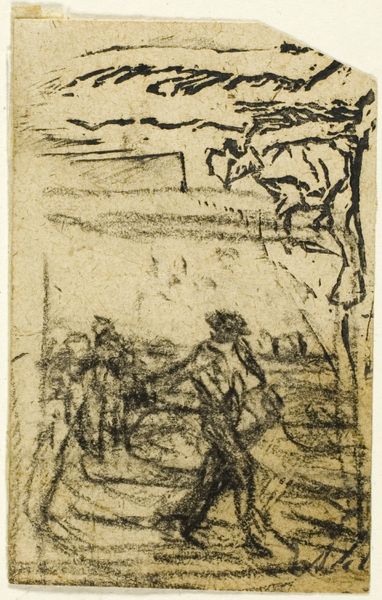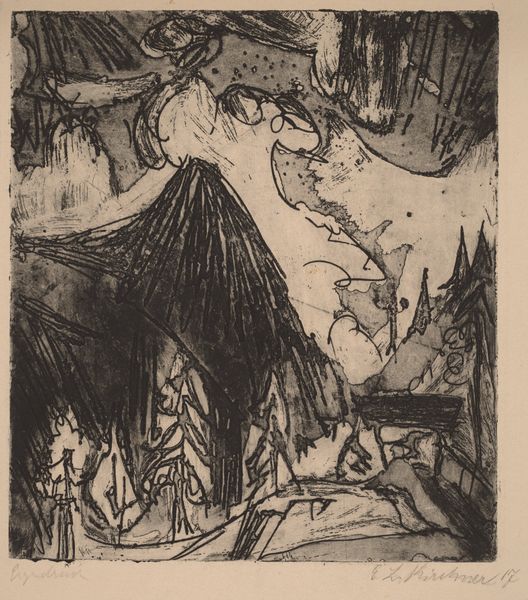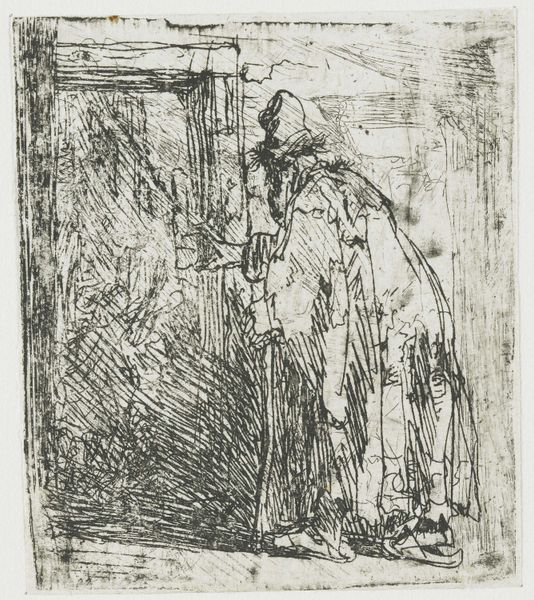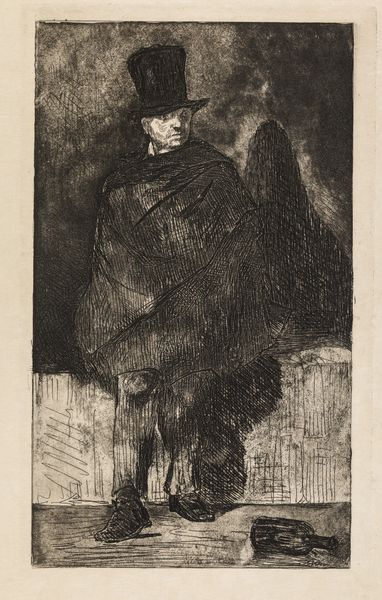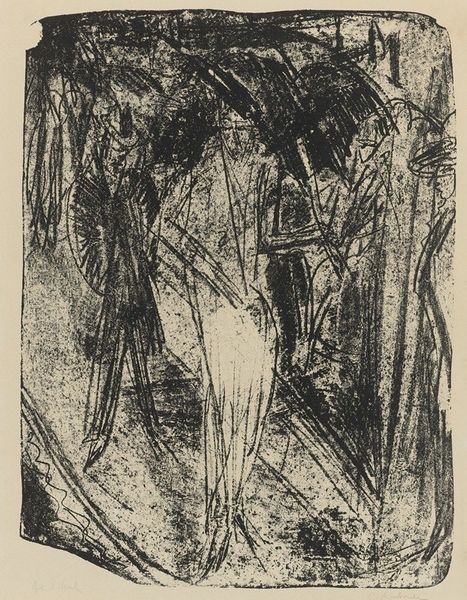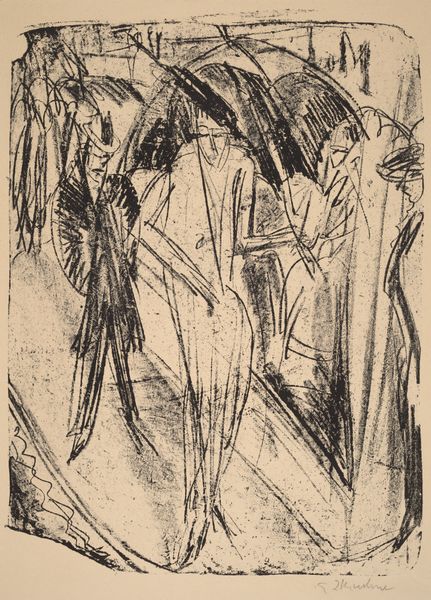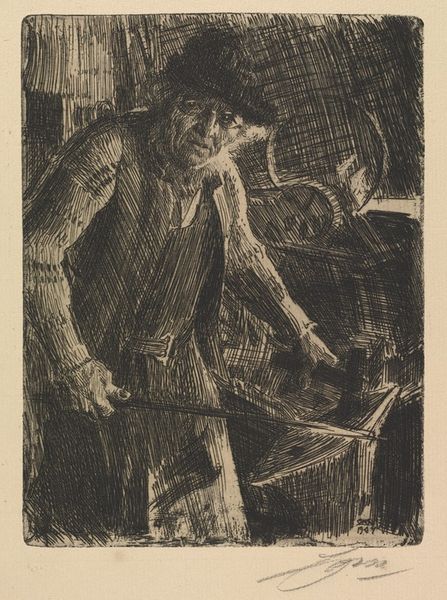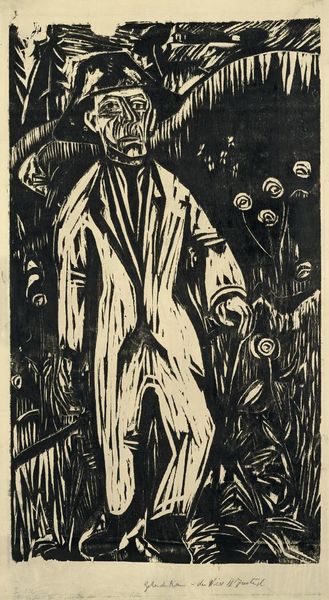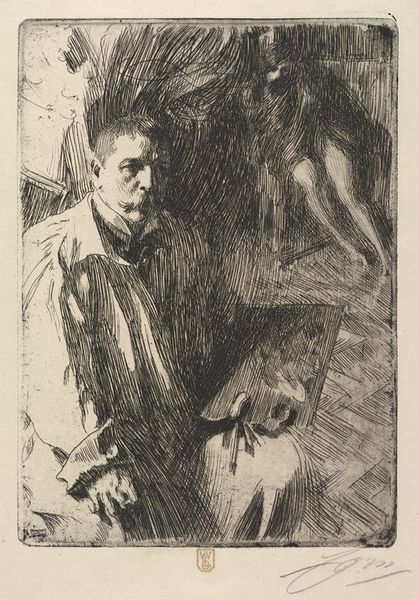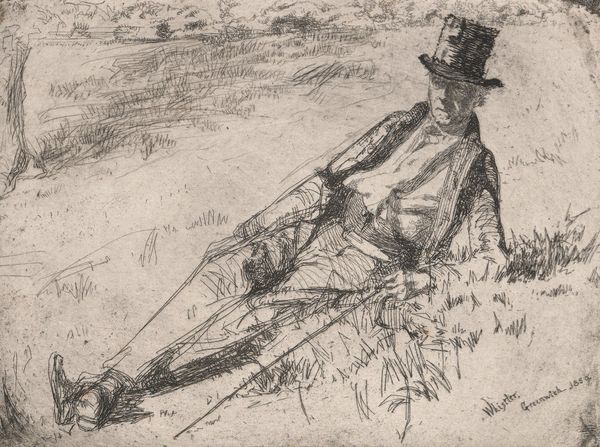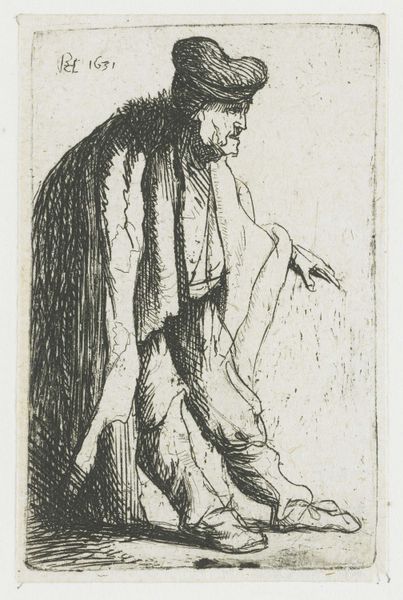
drawing, print, etching
#
portrait
#
drawing
# print
#
etching
#
landscape
#
german-expressionism
#
expressionism
Copyright: Public Domain: Artvee
Curator: Today we're looking at Ernst Ludwig Kirchner's "The Wanderer," an etching from 1922. Editor: It has this incredibly stark and isolating mood. The heavy lines of the etching and the somber subject matter create an unsettling, almost depressing, image. Curator: Indeed. Kirchner created this piece during a period of intense personal and societal upheaval in Germany. Consider the social turmoil following World War I and the artist's own struggles with mental health and addiction. These contexts are important lenses for understanding Kirchner's oeuvre and this artwork's subject. Editor: Absolutely, you can feel that turmoil. Looking closer at the formal elements, the diagonal lines slicing through the landscape are deeply unsettling and that contrasts with the human figure that almost disappears in the scene's landscape, reinforcing the feeling of helplessness. The overall effect of the composition is really effective, using quite simple means. Curator: Kirchner, associated with German Expressionism, often used such stark visual language to convey deep emotional states and critiques of modern society. "The Wanderer" could symbolize the lost individual adrift in a fractured world. We should recall how deeply artists in the Weimar Republic were wrestling with Germany’s social fabric. Editor: The rough texture is just perfect to highlight how the wanderer looks troubled, yet somehow still walking. This surface catches and diffuses the light beautifully; there is so much tonal range from pure black to near white using simple materials like an etching. The details really capture your eye and draw you in! Curator: That surface is key to his expressive language; etching gave artists in this era a vehicle to share their personal and often quite critical voices on politics. Kirchner was one among many voicing their concerns about Germany, society and the fate of many ordinary individuals at the time. Editor: Overall, "The Wanderer," for me, encapsulates the visual and emotional power of German Expressionism through its raw intensity, stark execution, and affecting engagement with the themes of the human experience of feeling lost, displaced. Curator: I find your close observations fascinating; for me, viewing "The Wanderer" through a socio-historical lens deepens its relevance, positioning it within the broader discourse of post-war disillusionment and the quest for meaning in a drastically altered world.
Comments
No comments
Be the first to comment and join the conversation on the ultimate creative platform.

